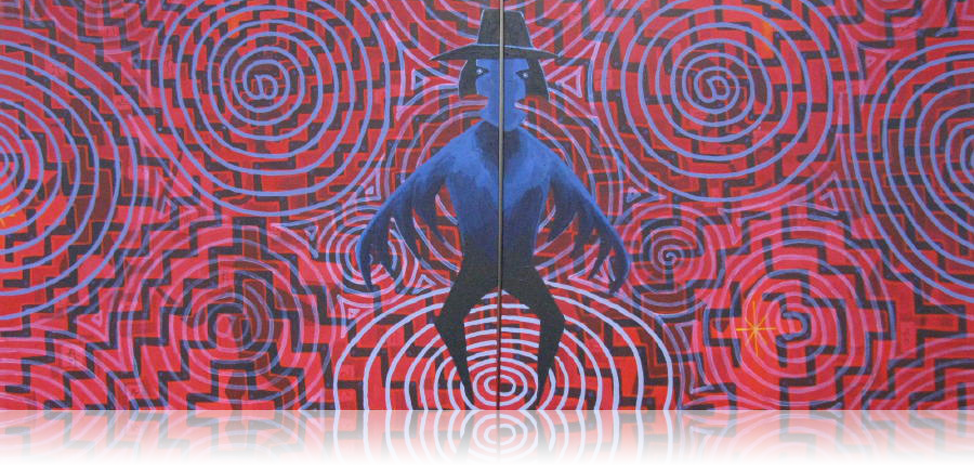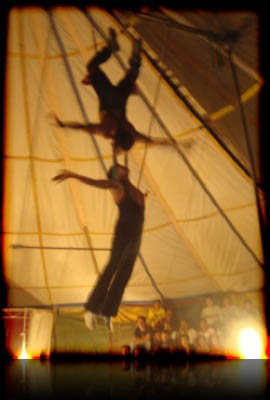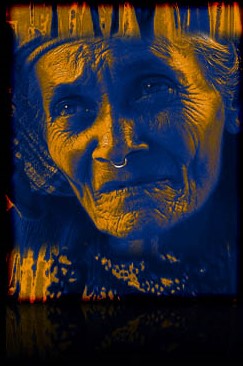Introduction: (De) Fatalizing the Present
DOI:
https://doi.org/10.25071/1913-5874/37358Abstract
This special issue, (De) Fatalizing the Present and Creating Radical Alternatives, brings critical theorists, artists, and poets together to engage systematically the temporal structure of the relationship of politics and violence with a focus on the tensions between slavery and colonization. These theorists show that disrupting dominant theorizations and their generated contingent affects begins with exposing the epistemologies and methods that call for a monitoring of each other’s activities in the aggregate without taking into account the current politico-ontologico-structural condition of world politics, inscribing the slave condition as a primary one, while also continually and constantly changing. This special issue expands the postcolonial critique that challenges the idea of the “West” and the “Global North” as primary analytical sites and their citizens the agents of politics against which everybody else is to be measured. Such critiques open up the space for us to take time as the primary object of focus in our analyses of the global, problems in world politics, ethics, and possible expressions of revolutionary practices.
References
Anna M. Agathangelou (2011). “Making Anew an Arab Regional Order? On Poetry, Sex, and Revolution.” Globalizations,8(5): 581-594
Anna M. Agathangelou (2011). “Bodies to the Slaughter: Global Racial Reconstructions, Fanon's Combat Breath, and Wrestling for Life.” Somatechnics,1(1): 209-248.
Anna M. Agathangelou and L.H.M. Ling (2009). Transforming World Politics; From Empire to Multiple Worlds. Routledge.
Anna M. Agathangelou and Nevzat Soguk (2011). “Rocking the Kasbah: Insurrectional Politics, the ‘Arab Streets,’ and Global Revolution in the 21st century.” Globalizations, 8(5): 551-558.
Arjun Appadurai (1996). Modernity At Large: Cultural Dimensions of Globalization. Minneapolis: University of Minnesota Press.Ulrich Beck (2000). Risk Society: Towards a New Modernity. Sage, 19.
Ulrich Beck (2000).“The Cosmopolitan Perspective: Sociology in the Second Age of Modernity,” British Journal of Sociology, 51(1):89.
Ulrich Beck (1992). “From Industrial Society to the Risk Society: Questions of Survival, Social Structure and Ecological Enlightenment,” Theory, Culture and Society, 9: 101.
Ulrich Beck, Anthony Giddens and Scott Lash (1994). Reflexive Modernization: Politics, Tradition and Aesthetics in the Modern Social Order. Cambridge: Polity Press, 7.
David L. Blaney and Naeem Inayatullah (2006). “The Savage Smith and the Temporal Walls of Capitalism.” In The Classics and International Relations in Context. Ed. Jahn Beate. Cambridge: Cambridge University Press, 123-55.
Alejandro Brugués (December 21, 2011). Interview with Jian Ghomeshi on Q (cbc.ca/q).
Jane Burbank and Frederick Cooper (2010). Empires in World History: Power and the Politics of Difference. Princeton University Press.
David Campbell. (2002). “Time Is Broken: The Return of the Past in the Response to September 11.” Theory & Event 5.
Frederick Cooper (2001). “What Is the Concept of Globalization Good For? An African Historian’s Perspective.” African Affairs, 100: 189–213.
Frederick Cooper (2005). Colonialism in Question: Theory, Knowledge, History. University of California Press.
Gilles Deleuze (1988). Bergsonism. Trans. Hugh Tomlinson and Barbara Habberjam. New York: Zone and Empiricism
Gilles Deleuze (1996). Subjectivity: An Essay on Hume’s Theory of Human Nature. Trans. Constantin Boundas. New York: Columbia University Press.
Arif Dirlik (2011). “Back to the Future: Contemporary China in the Perspective of its Past, circa 1980.” Boundary, 2 (38): 10.
Jenny Edkins (2003). Trauma and the Memory of Politics. Cambridge: Cambridge University Press.
Frantz Fanon (1967). The Wretched of the Earth. Grove Press.
James Ferguson (2006). Global Shadows: Africa in the Neoliberal World Order. Durham, NC: Duke University Press.
J.K. Gibson-Graham (1996). The End of Capitalism (As We Know It). Cambridge, MA: Blackwell.
Anthony Giddens (1984). The Constitution of Society. Berkeley: University of California Press, 51.
Derek Gregory (2004). The Colonial Present. Blackwell Publishing, 16.
Siba N. Grovogui(2011). ”To the Orphaned, Dispossessed, and Illegitimate Children: Human Rights Beyond Republican and Liberal Traditions.” Indiana Journal of Global Legal Studies, 18 (1): 41-63.
Saidiya Hartman (2002). “The Time of Slavery.” The South Atlantic Quarterly, 101 (4): 773.
Saidiya V. Hartman (1997). Scenes of Subjection: terror, Slavery, and self-making in Nineteenth-Century America. Oxford University Press, 86.
Marcus Holmes (2011). “Something old, something new, something borrowed: Rerepresentations of Anarchy in International Relations Theory.” International Relations of the Asia-Pacific, 11, 298.
Andrew R. Hom. Time and International Relations Theory, Master of Arts Thesis. Unviersity of Kansas.
Kimberly Hutchings (2007). ”Happy Anniversary! Time and Critique in International Relations Theory.” Review of International Studies, 33: 71-89.
Tsitsi Jaji (2009). “Sound Effects: Synaesthesia as Purposeful Distortion in Keorapetse Kgositsile's Poetry.”Comparative Literature Studies, 46 (2): 308.
Walter Johnson (2000). “Possible Pasts: Some Speculations on Time, Temporality and the History of Atlantic Slavery,” American Studies, 45 (4): 485.
Kara Keeling (2003). “’In the Interval’: Frantz Fanon and the ‘Problems’ of Visual Representation.” Qui Parle, 13 (2): 110.
Roger Lee (2003). “The Marginalization of Everywhere: Emerging Geographies of Emerging Economies.” In Remaking the Global Economy: Economic Geographical Perspectives. Eds. Jamie Peck and Henry Wai-chung Yeung. Sage, 73.
Emmanuel Levinas (1987). “Diachrony and Representation.” Time and the Other and Other Essays. Trans. Richard A. Cohen. Pittsburgh: Duquesne University Press, 97-120.
Emmanuel Levinas (1987). Time and the Other and Other Essays. Trans. Richard A. Cohen. Pittsburgh: Duquesne University Press, 1987, 39.
Lisa Malkki (1994). “Citizens of Humanity: Internationalism and the Imagined Community of Nations.” Diaspora,3(1): 41–68.
Bill Maurer (2000). “A Fish Story: Rethinking Globalization on Virgin Gorda.” American Ethnologist, 27(3): 670–701.
Achille Mbembe (2010). “Africa in Theory: A Conversation Between Jean Comaroff and Achille Mbembe.” Anthropological Quarterly, 83 (3): 653-678.
Mustapha Kamal Pasha (2011). “Islam, nihilism and liberal security.” Journal of International Relations and Development.
Ugo Perone (2011). The Possible Present. New York: SUNY Press.
Alex Prichard (2010). “Rethinking Anarchy and the State in IR Theory: The Contributions of Classical Anarchism.” Working Paper No. 03-10. School of Sociology, Politics, and International Studies, University of Bristol, UK.
Marshall Sahlins (2005). “Hierarchy, Equality, and the Sublimation of Anarchy: the Western Illusion of Human Nature,” The Tanner Lectures on Human Values, the University of Michigan, November 4, 2005.
Jared Sexton (2010). “People-of-color-blindness: Notes on the Afterlife of Slavery.” Social Text, 28 (2): 42.
Brent J. Steele (2007) Ontological Security in International Relations: Self-identity and the I.R. State. London: Routledge.
Anne Tsing, (2005). Friction. Princeton, NJ: Princeton University Press.
Anne Tsing (2000). “The Global Situation.” Cultural Anthropology,15(3): 327–360.
Loic Wacquant (2002). “From Slavery to Mass Incarceration.” New Left Review, 13: 41.
R.B.J. Walker (1991). ”State Sovereignty and the Articulation of Political Space/Time.” Millennium: Journal of International Studies, 20: 445-462.
Rachel Weber (2010). "Selling City Futures: the Financialization of Urban Redevelopment Policy." Economic Geography, 85 (3): 251-274
Robert Westley (2006). “The Accursed Share: Geneology, Temporality, and the Problem of Value in Black Reparations Discourse.” Representations, 92, 85.
Frank Wilderson (2011). Red, White and Black: Cinema and the Structure of US Antagonisms. Duke University Press.
Caitlin Zaloom (2009). "How to Read the Future: The Yield Curve, Affect and Financial Prediction." Public Culture, 21 (2): 245-268.
Mei Zhan (2009). “A Doctor of the Highest Caliber.” Medical Anthropology, 28 (2): 171.





